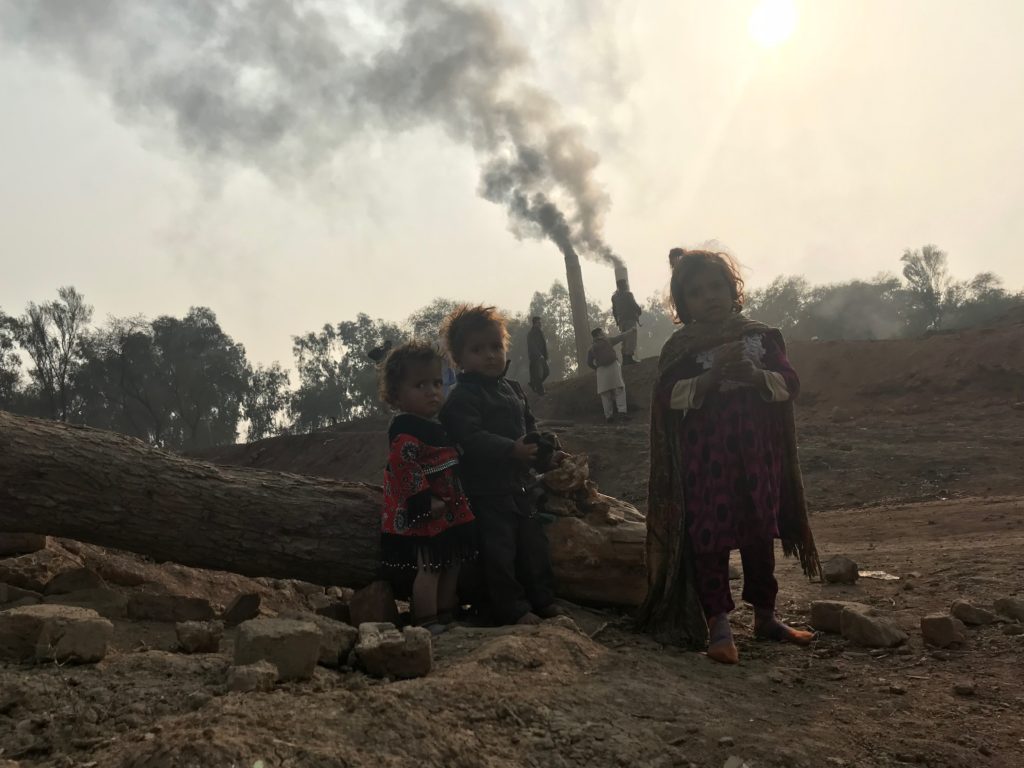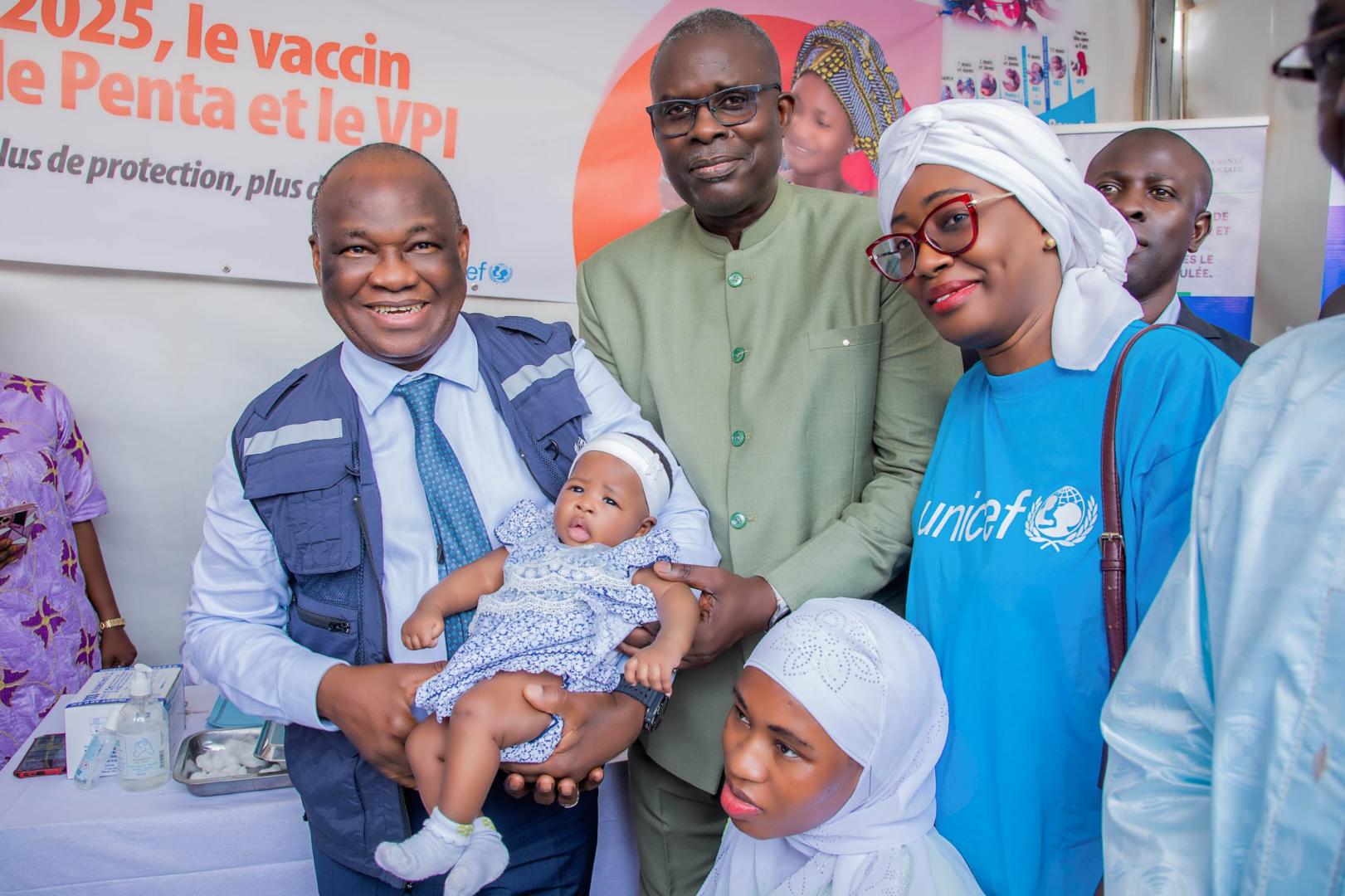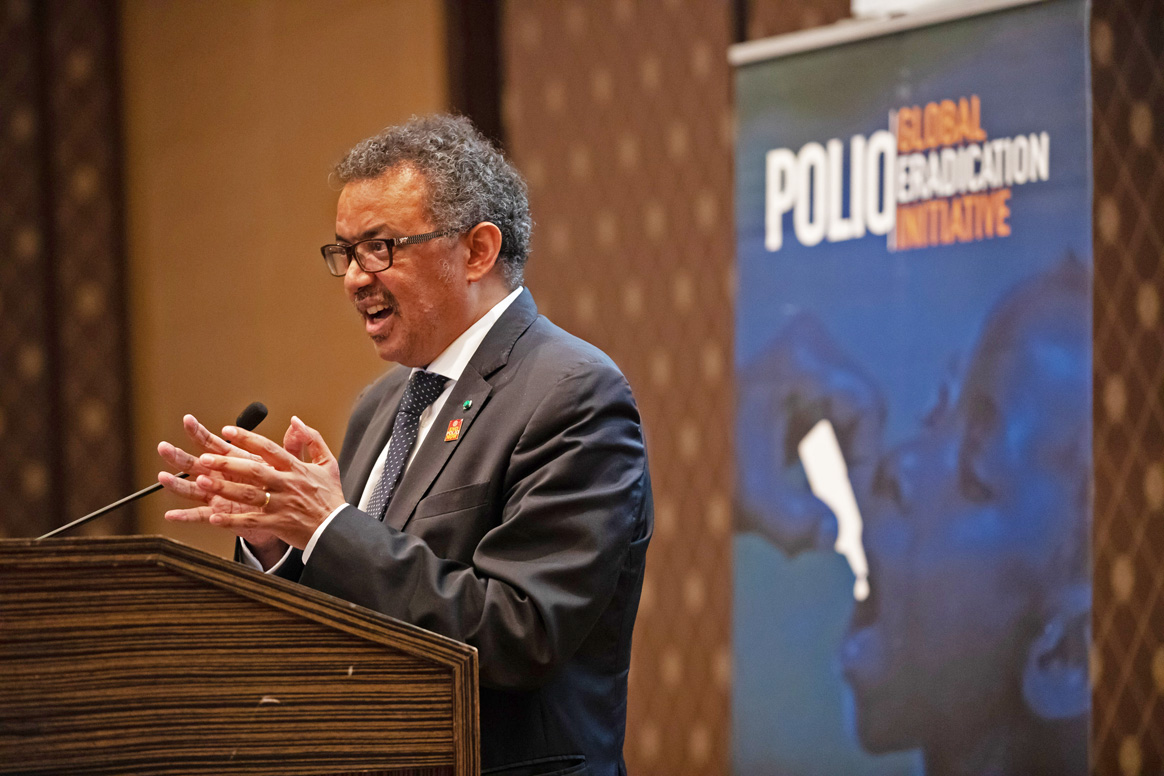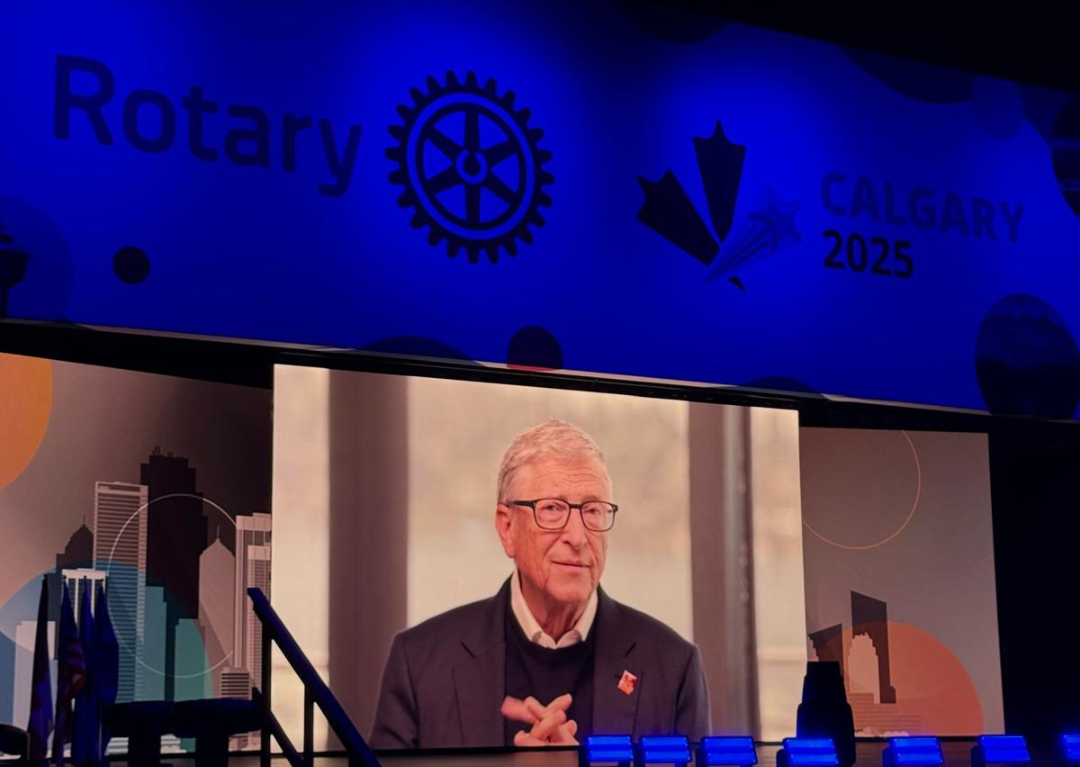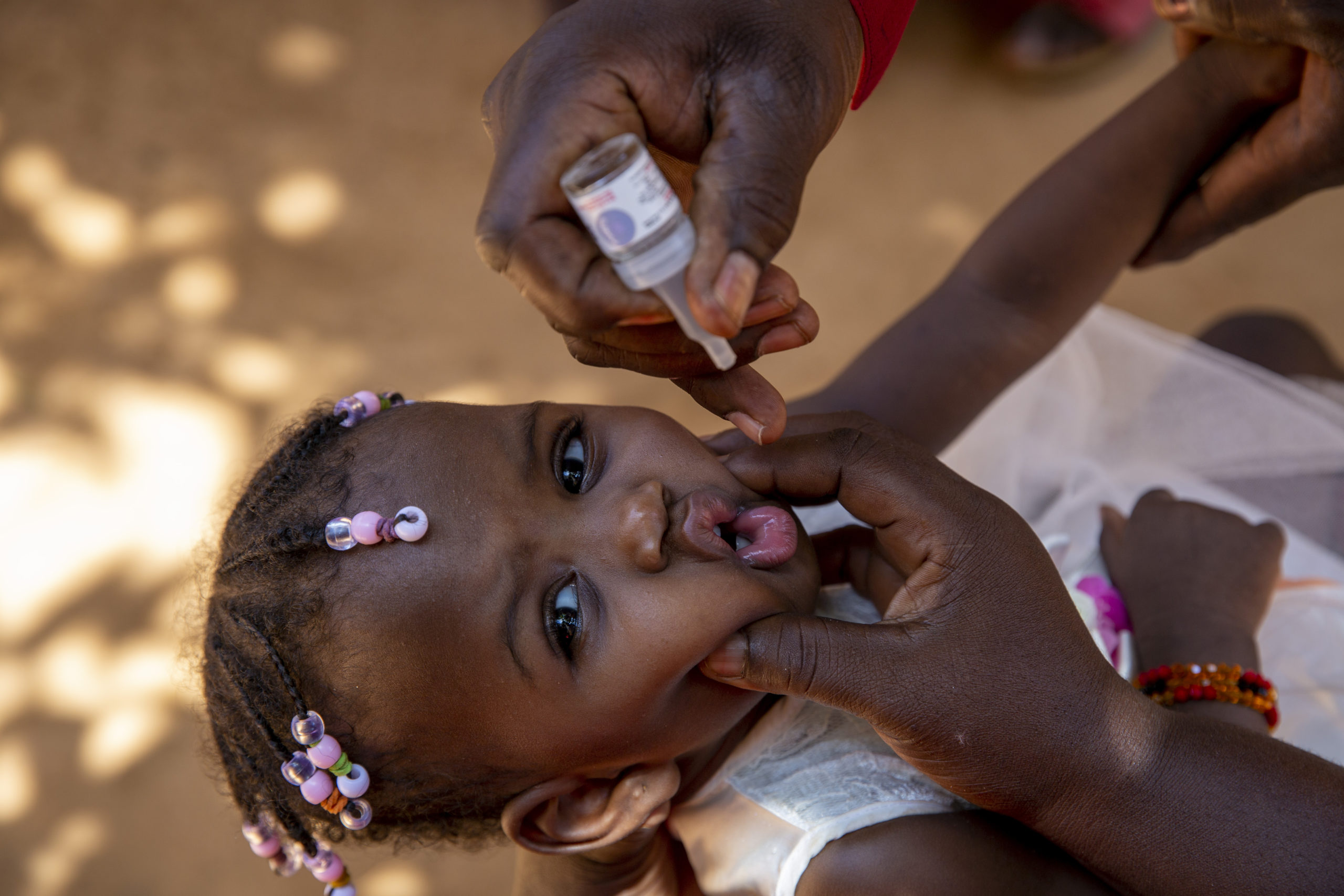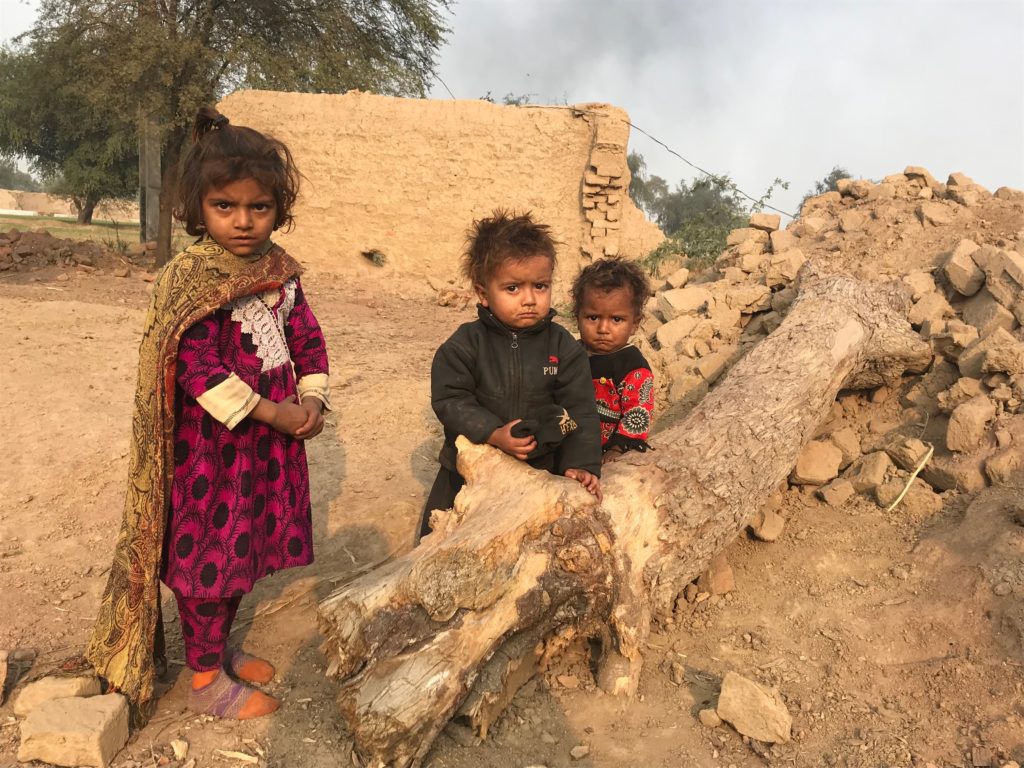
THE NOMADS
Faryad Rehman can’t read or write, and lives on a dirt floor in one of 18 dusty tents clustered together a stone’s throw from the main road to Lakki Marwat in southern Khyber Pakhtunkhwa (KP), where his two-month-old daughter Naina was born.
Naina will likely never go to school – no one in the camp has ever been to school – she has never seen a doctor, or received an immunization against any disease. Except for one: in her two months of life she’s already been immunized twice by the visiting two-person polio vaccination teams.
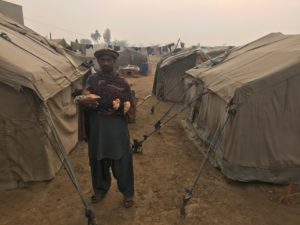 The Rehmans are economic nomads, based in Lakki Marwat but moving seasonally to East Punjab, Sindh or D.I. Khan to follow the harvest, work in a brick kiln, labor on a construction site, or attend a relative’s wedding or funeral. They make bangles, sell plastic toys and work as beggars, the women and infant children cloistering at red lights and intersections seeking small change.
The Rehmans are economic nomads, based in Lakki Marwat but moving seasonally to East Punjab, Sindh or D.I. Khan to follow the harvest, work in a brick kiln, labor on a construction site, or attend a relative’s wedding or funeral. They make bangles, sell plastic toys and work as beggars, the women and infant children cloistering at red lights and intersections seeking small change.
Once from Balochistan, these nomads speak Saraiki, can barely understand the native Pashto tongue of KP, and converse with their vaccinators in the common Urdu. Faryad says his only use for a local newspaper is “to wrap the bangles in”.
For Pakistan’s polio programme, these High-Risk Mobile Populations, or HRMPs – nomads, Internally Displaced Persons, Afghans, brick kiln workers and visiting “guest children” – are critical. With just a handful of polio cases reported in the country this year, these most vulnerable children, who often live outside the traditional health system, could be the key to stopping the virus from moving inside Pakistan or across the border to Afghanistan – and ultimately stopping it altogether.
In the district of Lakki Marwat, 742 polio vaccination teams go door to door to protect 173 545 children under the age of five against polio. But District Health Officer Dr Taouse Khan says it is the 5562 HRMP children the programme worries about the most: “HRMPs are not an afterthought, they’re our principal focus – on the first day of each campaign we cover these HRMPs. In this settlement there are 18 tents here and 27 children under the age of five, and each and every child of this camp has been identified and recorded.”
Faryad says his nomadic group have called Lakki Marwat home, on and off, for 15 years: “It’s good here. We’ll stay here until the landowner tells us to go, then we’ll go.”
THE VACCINATORS
In a small, windowless room off a laneway in Lakki Marwat City, 40 Lady Health Workers wrapped in colourful shawls are conducting a polio refresher training. Here they learn facts about polio and acute flaccid paralysis, and the inter-personal communication skills they need to speak with mothers about the importance of the polio vaccine. In recent months, they’ve been trained repeatedly to not only provide life-saving messaging inside the walled
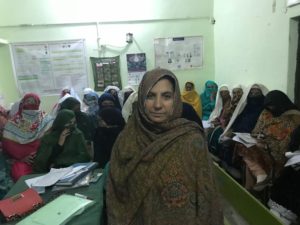
household compounds, but to specifically seek out visiting guest children for vaccination.
“We are well aware of HRMPs and guest children,” says vaccinator Tabassum Rana, “as well as vaccinating all the children on the streets and on the move, in the backs of trucks or rickshaws or carts. We know how to search for every child and we do search for every child. If I even see a child on the back of a motorbike passing through my area, I stop them to give the vaccination.”
Vaccinators do not only go house-to-house. Across Khyber-Pakhtunkhwa province, there are also 89 Permanent Transit Points (PTPs) vaccinating children on the move. In Lakki Marwat, there are 5 PTPs and an additional 5 temporary points to enable vaccination of children during the current seasonal high movement in the region.
THE AFGHANS
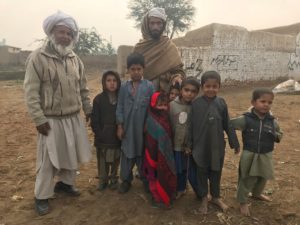 Mohammad Sayed is in his 50s, and has lived in Pakistan for more than 40 years. Once from Gardez, Afghanistan, he’s spent his working life stoking furnaces in brick kilns and doing petty jobs. His family and countryfolk have moved in around him, and now the houses of hundreds of Afghan settlers spread out through the fields.
Mohammad Sayed is in his 50s, and has lived in Pakistan for more than 40 years. Once from Gardez, Afghanistan, he’s spent his working life stoking furnaces in brick kilns and doing petty jobs. His family and countryfolk have moved in around him, and now the houses of hundreds of Afghan settlers spread out through the fields.
In all, there are 56 Afghan Refugee settlements across KP province – four of them in Lakki Marwat, with a total target population of 1,834 children under five. With polio moving freely between Pakistan and Afghanistan – mostly in the bellies of Afghan children passing back and forth across the border, these populations are a key focus for the programme. In Mohamad’s settlement, 373 children under five are documented to be vaccinated in every campaign.
Mohammad fears the once-easy movement across the border to Afghanistan is now a thing of the past. “Just two years back it was no problem going and coming back but not now. Now if we go back with our Afghan passports we can’t come back. Now we break our houses down and take the door frames and the windows and we go there and build again.”
Now his trips are limited to “Faisalabad and Peshawar, for business. We’ve been 40 years in Pakistan, doing business.”
THE SOCIAL MOBILIZERS
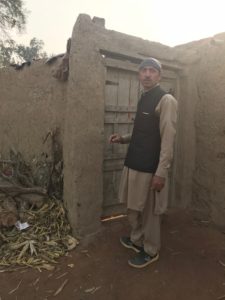 COMNet social mobilizer Kalim Ullah has tracked every HRMP in his area, but maintains there is no room to rest. “I visit all the brick kilns and nomadic settlements each month, investigate if there are new tents, new arrivals, ask if there are any pregnant women or newborn babies. This field validation is part of our duty. But it is hard to track every tent, every brick kiln.”
COMNet social mobilizer Kalim Ullah has tracked every HRMP in his area, but maintains there is no room to rest. “I visit all the brick kilns and nomadic settlements each month, investigate if there are new tents, new arrivals, ask if there are any pregnant women or newborn babies. This field validation is part of our duty. But it is hard to track every tent, every brick kiln.”
“We go there and we gather their elders and we speak about the importance of the campaign. The settlements have a lot of issues – no water, no electricity. But I tell them that next week you might get water, you might get electricity, but if today your child gets paralyzed from polio, there’s nothing you can do for him next week.”
THE BRICK KILN WORKERS
On the road out of Lakki Marwat, a brick kiln chimney spews black smoke into hazy air. Here, four families are living and working, with five children under 5. At this site, all the workers are local, “but there was a brick kiln over there,” the men say, pointing to a distant chimney, “where all the labourers were from Jamshoro, Sindh. They’ve gone now.” Where? They shrug. “We don’t know.”
At the workers’ house flanking the chimney, the social mobilizer speaks through a door to the women inside. All the men are working, so he can’t go in. In the last campaign, a senior woman’s voice says from inside, they had a ‘guest child’ stay – her daughter and son-in-law visited from Zhob, Balochistan. She says he works in the mines there.
One day later, it is announced that Pakistan’s seventh polio case for 2017 has been detected – in Zhob, Balochistan. The hunt for every last child goes on.
